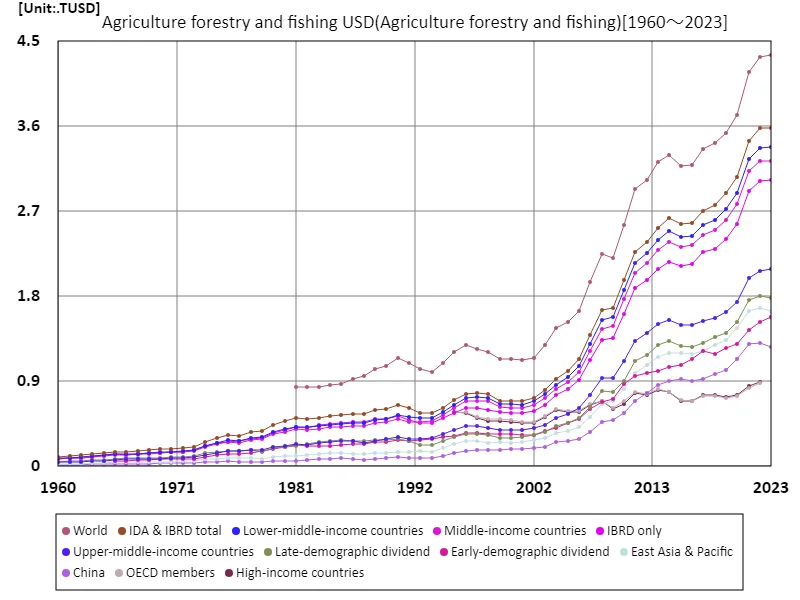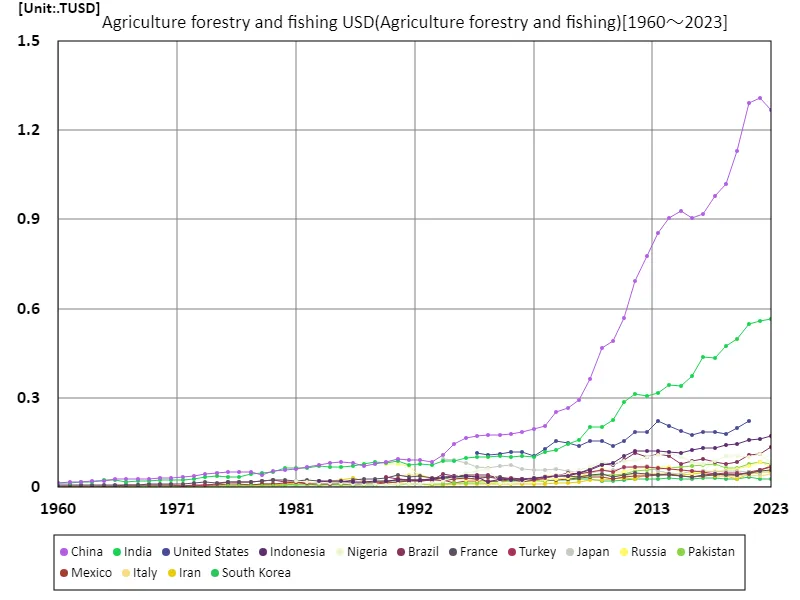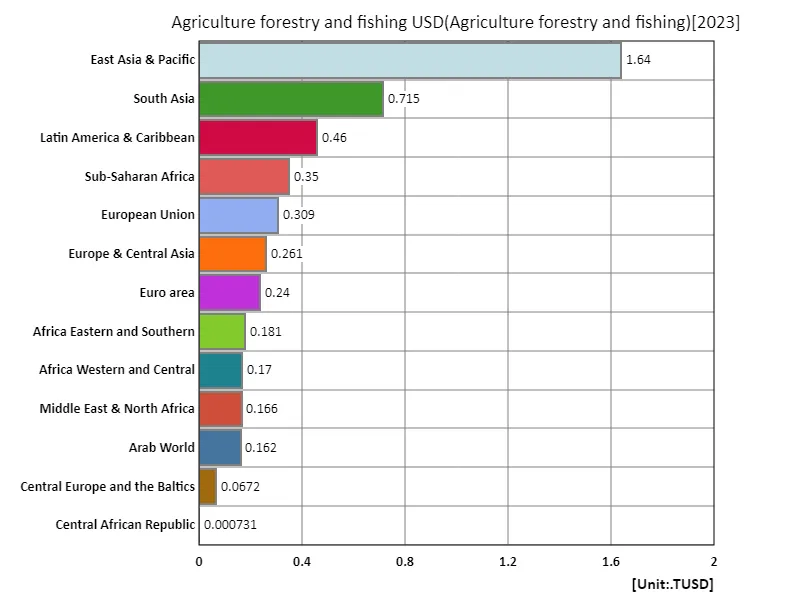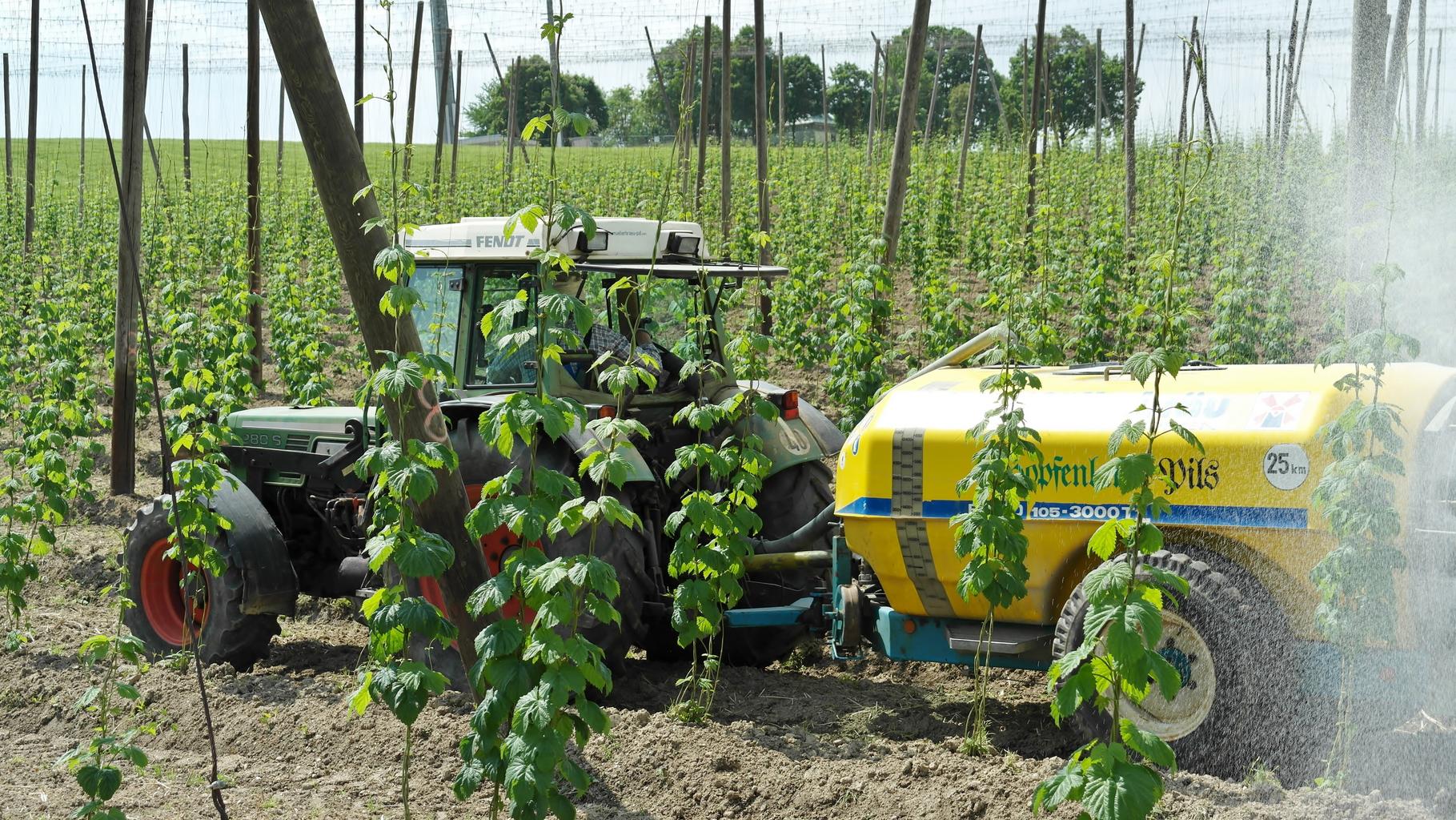Abstract
The added value of agriculture, forestry and fisheries has played an important role in the global economy for many years. According to 2023 data, the sector’s added value will reach US$4.35 trillion, demonstrating its importance in the global economy. Agriculture is a major source of employment, especially in developing countries, and is directly linked to food security. On the other hand, sustainable development is an issue in the management of fisheries and forest resources, and the country also faces the challenge of being vulnerable to the effects of climate change. In recent years, the company has been focusing on technological innovation and sustainability, and is growing while striking a balance between efficiency and environmental protection. These factors are key to further realizing the potential of agriculture, forestry and fisheries.
Agriculture, forestry and fisheries, US dollars
The added value of agriculture, forestry and fisheries has grown significantly over the past few decades. From the 1960s to 2023, the sector has expanded rapidly and become a significant economic activity, especially in developing countries. This has contributed to increased food production and job creation in rural areas, and global agriculture, forestry and fisheries value added could reach an all-time high of US$4.35 trillion by 2023. This growth is the result of technological innovation, improved agricultural productivity and expanding markets, with agricultural policies and international trade also playing a major role. At the same time, risks such as climate change and weather abnormalities are increasing, making sustainable agriculture even more important. Going forward, there will be a demand for efforts to balance environmental considerations with improved productivity. Agriculture, forestry and fisheries continue to play a vital role in the global economy and are key pillars towards sustainable development.


The maximum is the latest one, 4.35TUSD of World
Agriculture, forestry and fisheries, US dollars (countries around the world)
The economic importance of agriculture, forestry and fisheries has increased significantly over the past decades. In particular, in the case of China, the sector grew rapidly between 1960 and 2023, reaching an all-time high of US$1.31 trillion in value added in 2022. China’s agriculture, forestry and fisheries are important pillars of the domestic economy, making significant contributions to increasing food production and creating jobs. This growth has been underpinned by technological innovation, agricultural modernization and market expansion. At the same time, environmental impacts and sustainability issues are also increasing, and there is a need to balance the efficient use of resources with environmental protection. The added value of China’s agriculture, forestry and fisheries is now 96.8% of its peak, and the economy is diversifying and adopting new technologies. In the future, key challenges will be to build sustainable agricultural systems and strengthen competitiveness in international markets.


The maximum is 1.31TUSD[2022] of China, and the current value is about 96.8%
Agriculture, forestry and fisheries, US dollars (world economies, latest year)
China’s agriculture, forestry and fisheries economy will be the largest in 2023, recording US$1.27 trillion. The sector’s total value added is US$3.84 trillion, compared with the average of US$25.3 trillion. Agriculture, forestry and fisheries occupy an important position in the global economy, contributing to increased food production and stable employment. This growth has been driven by technological innovation, agricultural modernization, and market expansion. In developing countries in particular, agriculture accounts for a significant portion of gross domestic product and supports livelihoods in rural areas. However, from the perspective of sustainability, efficient use of resources and environmental protection are issues. Climate change and weather instability also have a major impact on agriculture, and there is a need to introduce appropriate policies and technologies to address this. Going forward, the promotion of sustainable agriculture and international cooperation will become even more important, and the challenge of achieving both food security and economic growth awaits.


The maximum is 1.27TUSD of China, the average is 25.3GUSD, and the total is 3.83TUSD
Agriculture, forestry and fishing, US dollars (region, latest year)
According to 2023 data, global agriculture, forestry and fisheries value added totaled US$4.72 trillion. In particular, East Asia and the Pacific region accounted for the largest share, at US$1.64 trillion. In this region, many countries, including China, are promoting large-scale agricultural production and technological innovation, making the agricultural sector a key driver of economic growth. On the other hand, as the sustainability and environmental impact of agriculture come into question, efficient use of resources and environmental protection are becoming more important. With an overall average value added of US$363 billion, agriculture provides a stable economic base globally. However, climate change and weather instability are having an increasing impact on agricultural crops, and appropriate measures are needed. Going forward, it will be necessary to promote sustainable agriculture, disseminate technology, and strengthen international cooperation. Addressing these challenges is essential if agriculture, forestry and fisheries are to remain key pillars of global food security and economic growth.


The maximum is 1.64TUSD of East Asia & Pacific, the average is 363GUSD, and the total is 4.72TUSD



Comments